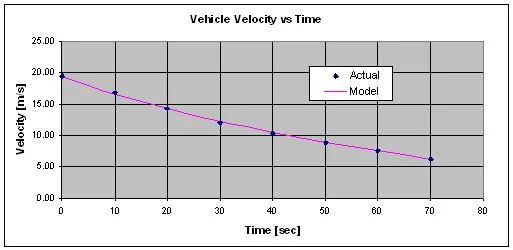
Aerodynamics
Having just read Lance Cole's excellent book "SAAB Cars: The Complete Story" the importance of aerodynamics to the design of th early Saabs made me think that the GT6 must be reasonably aerodynamic, especially as the Le Mans Spitfires had a GT6 roof which must have been fitted to improve their aerodynamics and hence their top speed. I googled this and on the Triumph Experience website (see links) a computer program called 'CarTest' was described. As Standard-Triumph never put the Spitfire/GT6 or any other Triumph into a wind tunnel, this program was written to calculate the results as if a particular car had been tested in this way. According to the CarTest Software website "CarTest 2000 is an automobile maximum acceleration computer simulation. The program uses the specifications for an automobile to mathematically accelerate the car from a standing or rolling start until maximum speed is reached." The questioner on the Triumph Experience website had asked "Does anyone know whether wind tunnel tests were done during the development of the GT6 or whether anyone has done one since as I would like to know the drag coefficient (Cd)?". One response pointed to the archived website tecknett.com which gave the results of using CarTest for various cars. A DOS version of this program can be purchased for around $40 outright or subscribed to for a monthly payment. The results for Triumphs were as follows (with the Spitfire highlighted in red).
| Vehicle Year and Model | Cd | Area (m2 ) | Area (ft2 ) | Cd x m2 | Cd x ft2 |
| '80 Spitfire | 0.42 | 1.437 | 15.47 | 0.6 | 6.5 |
| '72 Stag | 0.38 | 1.693 | 18.23 | 0.64 | 6.93 |
| '68 TR-250 | 0.45 | 1.562 | 16.82 | 0.7 | 7.57 |
| '82 TR-7 | 0.36 | 1.765 | 19 | 0.64 | 6.84 |
| '82 TR-8 | 0.36 | 1.765 | 19 | 0.64 | 6.84 |
The GT6 must have better aerodynamics for reasons already described above, so a way of pro-rating the data needs to be found. One responder on Triumph Experience suggested that the results of a particular car available in both convertible and soft top version may suggest this, and as the only ones he could find were the Ford Mustang convertible and GT of same body which have a 0.02 Cd difference. This would give the GT6 a Cd of around 0.40. This compares unfavourably to my current daily driver, a 2014 Honda Civic (9th gen.) which has a Cd of 0.27 in saloon form (according to Wikipedia).
I have also found another way of calculating the Cd, using a method devised by Rob Steves. He lives in Vancouver, British Columbia, Canada. His education is in electrical and mechanical engineering. In what little spare time he has he enjoys designing, building and modifying things in an attempt to achieve some kind of long term payback or “yield” for his efforts. His website 'IWillTry.org' has many projects, one of which is "Measure the drag coefficient of your car".
By 'experimenting' as suggested by the website, you can "determine your vehicle's drag coefficient Cd and coefficient of rolling resistance Crr. This is done by measuring your vehicle's speed as a function of time while coasting in neutral. by trial runs with a stopwatch, timing deaccelaration at various speeds while freewheeling. The data needs to inserted into a supplied excel spreadsheet. Full details on can be seen by clicking the image below, or here.
![]()